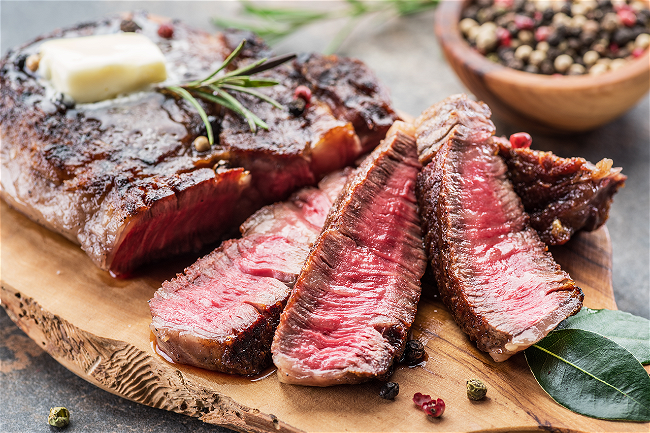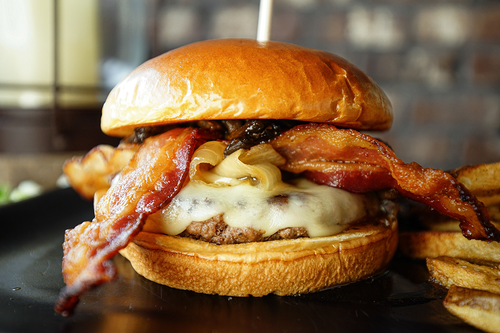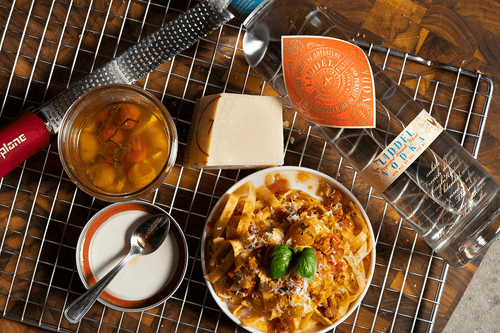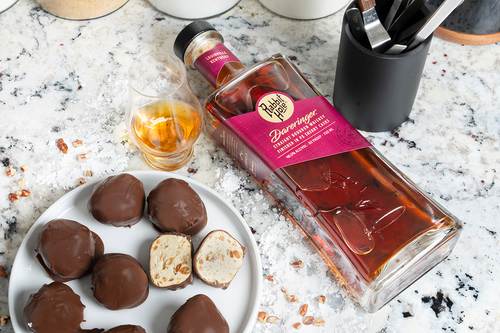Bourbon Steak
BOURBON STEAK
It's hard to imagine a better way to prepare a juicy steak than to marinate it in a fine Rabbit Hole Distillery bourbon or, incorporate bourbon into a sauce or glaze to top your steak. Choosing the proper cut of meat for your bourbon steak is essential. Planning ahead and marinating the steak properly is also important. These factors can impact the flavor and tenderness of the cut...

At the grocery store or butcher shop, you'll want to select the cut of meat that works best for your preferred cooking method. When it comes to beef, there are eight primal cuts — loin, rib, round, flank, chuck, shank, brisket, and short plate. Some cuts of meat are suited for steak dishes, while others work better for burgers or roasts.
If you are interested in making bourbon steak at home, here is everything you need to know about popular steak cuts.
Rib-Eye
Rib-eye often ranks as the top pick when choosing a steak for grilling. If you plan to make bourbon steak with a rib-eye, here are some of the pros and cons of using that cut of meat.
Rib-eye steaks typically have a lot of marbling, which indicates a higher fat content. The fat makes for a more tender steak and provides more flavor, especially when marinating first. It tends to be the most flavorful and juicy of the cuts. Compared to a filet mignon, a rib-eye is bigger — perfect for large appetites. It's hard to find a downside to making bourbon steak with a rib-eye, unless you're concerned about the fat content and cholesterol.
To cook out some of the fat, grill the steak until it's well done, or choose a cut that has less marbling. Just know that both options will result in a tougher and less flavorful steak. While the rib-eye is fattier than some other cuts of steak, not all its fat is bad. Both the monounsaturated and polyunsaturated fats it contains can lower LDL (the "bad" cholesterol) levels. Keep to 3 ounces to limit the bad fats and cholesterol in a rib-eye.
Another potential downside to using a rib-eye involves the grilling process itself. Watch for drippings that could cause the flames to flare up. Keep your steak away from direct flames, or use a drip pan to reduce the risk of fire.
Sirloin
Sirloin is a boneless cut of steak that's great for cooking on a skillet or over a grill. You can buy either a top or bottom sirloin. Here are the pros and cons of using sirloin for bourbon steak.
Bottom sirloin might be the way to go if you are looking for a cut of meat that's best for slicing up and marinating. It's crucial to pay close attention when cooking a bottom sirloin. Otherwise, you could wind up with a very tough piece of meat. Bottom sirloin is not ideal for grilling as a whole steak.
Top sirloin can have decent marbling and tenderness at a lower price point than some of the more coveted steak cuts. Top sirloin is also relatively lean, making it slightly healthier than other options. However, its muscular nature means it can take longer to cook when compared to other steaks.
Top sirloin can be a great deal, especially if you're on a budget. You'll get a decent steak with a lot of flavor that won't drain your bank account.
T-Bone
T-bone is another coveted cut of beef that's great for grilling. Plus, you essentially get two cuts of meat in one: a tenderloin on one side and a strip steak on the other. Here are the pros and cons should you choose to grill up a T-bone for your bourbon steak recipe.
One of the obvious pros is you get the benefit of two steaks in one. T-bones remain juicy when cooked and pack in a lot of flavor when prepared correctly. Cooking a T-bone requires skill because you're cooking different types of meat. That makes it a challenging cut for some cooks. The tenderloin side of a T-bone cooks faster because it has less fat, so the best way to grill a T-bone is to sear it over high heat and then finish cooking it with indirect heat.
Filet Mignon
Filet mignon is one of the most tender cuts of meat, which means it's often one of the most expensive. If you want to make bourbon steak with filet mignon, here are some things to consider.
Filet mignon is excellent for pan cooking, especially when bacon is involved. To maintain a filet mignon's quality, sear each side and move it to the oven to finish.
Filet mignon's tenderness could be a negative for making bourbon steak. Some cooks suggest filet mignon is too tender for marinades, which work better to tenderize tougher cuts of meat. Also, filet mignon is pricey. If you're making bourbon steak for more than two people, you'll probably want to choose a less expensive steak.
Flank Steak
Flank steak has a lot of flavor and can be tender when cooked correctly. If you are looking at the flank steak for a bourbon steak recipe, here's what you need to know about this cut.
Flank steak is great for marinades, because the sauce can tenderize the tough connective tissues. Flank steak is not as tough, however, as cuts like skirt steak. It's also lean, which is a plus for those trying to minimize fat content.
One potential downside to flank steak is it's best served in thin slices. If you don't cut against the grain, you'll quickly discover how frustrating it can be to work with flank steak. Overcook it even slightly, and you'll also wind up with a less desirable flavor.
The right cut of meat for your bourbon steak is a personal choice. You can even try bourbon steak using different types of game meat including venison and moose. Just make sure you use a quality bourbon for your marinade, such as one from Rabbit Hole Distillery, to bring out the best flavor in your steak.






















